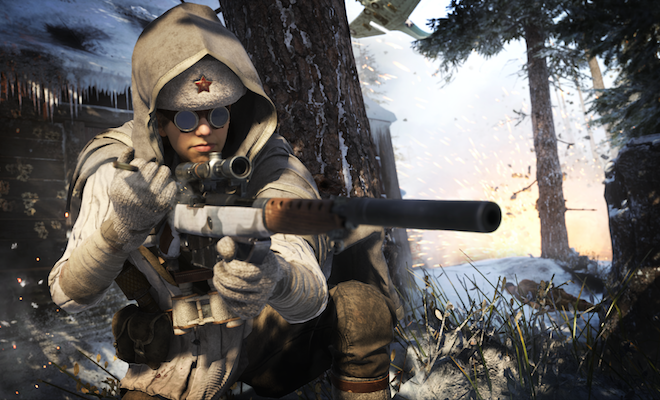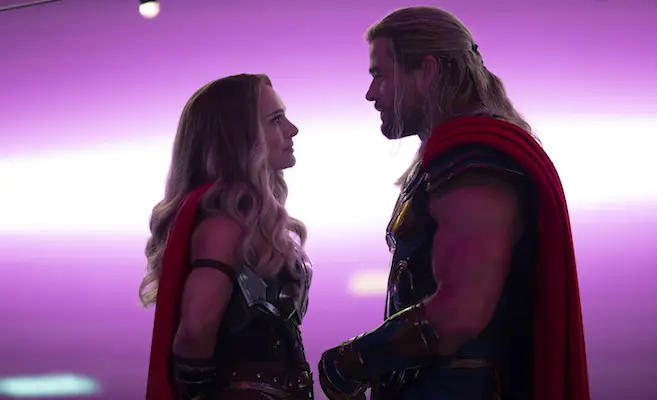Sony unveiled Uncharted: Drake’s Fortune years before the PlayStation 3 even sniffed a retail store. At the time Naughty Dog’s first non-Jak title for Sony looked easy to pin down: an action-adventure with a lead character who was little more than a young Indiana Jones seeking fame and fortune in the lush jungles of a forgotten land. Having now played through the entirety of Uncharted: Drake’s Fortune, we can assure you that while the nut of that preconception is true, Uncharted has its own distinct personality with a modern-day setting that Indiana Jones never dreamed of, and a few twists and turns that action-adventure fans might also find surprising. Uncharted also happens to be the most cinematic, well plotted and well-produced game we’ve seen this year, even if it’s not necessarily the best.
The gameplay in Uncharted: Drake’s Fortune is just what you’d expect from an action-adventure title: third-person gunfights, the ability to take cover, platforming, puzzle-solving, harrowing leaps over bottomless pits, on-rails vehicle combat and even a few pseudo-free-roaming vehicular segments. In a sense, Uncharted: Drake’s Fortune feels like Tomb Raider sprinkled with elements of Prince of Persia and Gears of War, which certainly sounds like a match made in Heaven. For the most part it is, but a few nagging issues keep it from realizing its full potential.

Nathan Drake, a supposed descendant of historic explorer Sir Francis Drake, assumes the lead role in Uncharted. Calling him a young Indiana Jones is tempting, but to do so wouldn’t be fair. Yes, he’s a ladies’ man; yes, he dives under falling doors; and yes, he has little problem digging through bones to locate mythical treasures. Essentially, the core archetypes from those pulp-fiction stories are alive and well. But Indiana Jones was an archaeologist seeking treasure in the early 20th century. Nathan Drake is a dyed-in-the-wool treasure seeker whose adventures take place in the present day, complete with rocket launchers, electronic grenades, camcorders and jet skis. Nathan also has more of a slapstick and sarcastic side, and he’s less than thrilled to battle hundreds of pirates and mercenaries. If ever there was an “everyday hero,” it’s Nathan Drake. Except for the whole “pulling himself up sheer cliffs with little effort.” That doesn’t exactly scream John. Q. Public.
Also unlike Indiana Jones, whose adventures took him to diverse locations, Nathan finds himself jumping, shooting and solving puzzles in a single tropical jungle. Granted, the jungle covers an entire island, and its environments are filled with underground caves, forts, monasteries and the like, but with the exception of one urban/concrete mission, Nathan sticks to jungle-based adventuring. This means there’s plenty of vine swinging, pillar scaling, water-wheel turning and catacomb spelunking, with a smattering of Jeep and jet-ski missions. These elements are all executed well, and Naughty Dog paces the game in a way that you’re introduced to new gameplay mechanics just as you’re getting tired others. Still, the majority of Uncharted: Drake’s Fortune is comprised of intense gunfights, and that’s where the game loses some of its polish and points.
The first issue is that almost every enemy in the game has the supernatural ability to become a bullet sponge. Early in the game, simple thugs take about 10 shots to kill (head shots are still one-shot kills), which seems about right for most shooters. In later stages, however, when pirates and mercenaries are Nathan’s primary opposition, you encounter bullet-proof vests, Kevlar helmets and anything else a small army might have at its disposal. The result is a full clip from an M40 or AK-47 being wasted on a single enemy, while they can kill Nathan in five to seven shots.
The second issue is one of AI imbalance. In the few missions where Nathan is accompanied by one of his cohorts, you’d think the AI would serve a useful purpose. Unfortunately, their “help” is more moral than literal, as they fire their guns but seldom hit anything, even at point-blank range. This is a frustrating tragedy at times, because the enemy AI is smart enough to regularly flank Nathan and flush him out of cover, yet the lack of ammo and friendly intelligence means you’re often on your own against wave after wave of dozens of enemies. And those enemies are insanely tough in the later stages.
The occasionally difficult situations are compounded by the game feeling about two or three missions too long. Yes, I know that’s heresy to say; a game being too long isn’t normally a problem. But in the case of Uncharted: Drake’s Fortune, the length seems a bit forced at times. Take, for instance, the appearance of zombies/demons in the last three or four missions. To Naughty Dog’s credit, the undead creatures totally fit within the plot and actually serve a purpose, but they still feel out of place and (no offense) a bit like a lazy solution to a plot problem. Yes, they advance the plot, and yes, they introduce a refreshing new enemy type, but had the developers found another way to get Nathan from emotional Point A to Point B, they could’ve shaved off a couple levels and made the game feel a bit more cohesive in the process.
In a testament to the rest of the game’s quality, though, the zombies and frustrating gunplay can be overlooked somewhat because of the overall plot and production values. Uncharted: Drake’s Fortune has the most impressive overall production values, voice acting and graphical panache that we’ve seen in 2007, bar none. The original musical score, in particular, is a work of art, and it’s too bad that portions of it don’t play more often.
Uncharted: Drake’s Fortune is one of a handful of new franchises that we can’t wait to see more of down the road. This first outing is excellent, but there are definitely some issues for Naughty Dog and Sony to iron out before Nathan Drake makes his return. The archetype is there, the narrative is there, and the production values are there, but the gameplay needs a bit more balancing and the narrative just a hair more focus in the sequel. Still, the fact that we’re talking about a sequel is exciting, and we certainly hope to get our hands on one sooner rather than later. Maybe we’ll even get to see more non-jungle environments next time around.
– Jonas Allen


